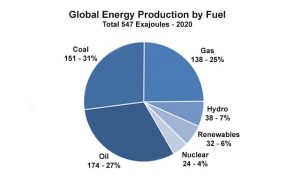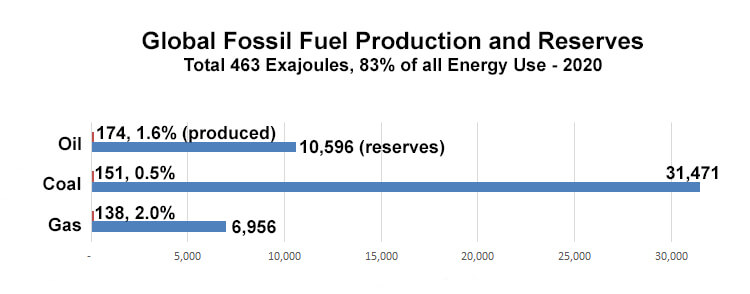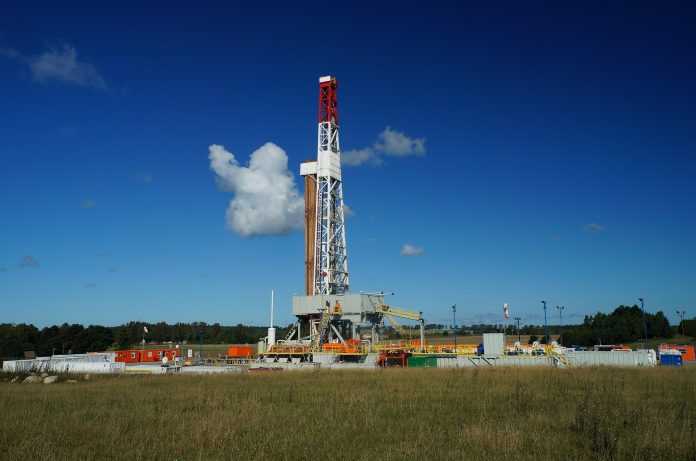By Edward Ring
Fossil fuel powers the economic engine of civilization. With a minor disruption in the supply of fossil fuel, crops wither, and supply chains crash. With a major disruption, a humanitarian apocalypse could engulf the world. Events of the past few months have made this clear. Without energy, civilization dies, and in 2020 fossil fuels continued to provide more than 80 percent of all energy consumed worldwide.

This basic fact, that maintaining a reliable supply of affordable fossil fuel is a nonnegotiable condition for the survival of civilization, currently eludes far too many American politicians, including Joe Biden. Observes energy expert and two-time candidate for governor of California Michael Shellenberger: “One month ago, the Biden administration killed a one-million-acre oil and gas lease sale in Alaska, and seven days ago killed new on-shore oil and gas leases in the continental U.S. In fact, at this very moment, the Biden administration is considering a total ban on new offshore oil and gas drilling.”
Another basic fact, easily confirmed by consulting the 2021 edition of the BP Statistical Review of Global Energy, is that if every person living on Earth were to consume half as much energy per year as the average American currently consumes, global energy production would need to nearly double. Instead of producing 547 exajoules (the mega unit of energy currently favored by economists) per year, energy producers worldwide would need to come up with just over 1,000 exajoules. How exactly will “renewables,” currently delivering 32 exajoules per year, or six percent of global energy, expand by a factor of 30 to deliver 1,000 exajoules?
The short answer is, it can’t. Despite the fanatical, powerful group-think that calls for the abolition of not only fossil fuels but also most hydroelectric power and all nuclear power, the reality is that most nations of the world are going to continue to develop every source of energy they can, and they’re going to do it as fast as they can. Renewables may have a growing role in that expansion, but renewables are decades away from providing more than a fraction of total global energy production.
How Much Do We Have Left?
The argument against fossil fuels rests on two premises. The first is that carbon dioxide emissions from burning fossil fuels are causing a climate emergency. Without (for now) arguing against the theory that anthropogenic CO2 is going to destroy the planet, suffice to say that we’d better adapt to whatever climate change is coming, because the only nations even semi-serious about eliminating the use of fossil fuels are Western nations. Once again, recent events have demonstrated that fossil fuel isn’t going anywhere, and nations that renounce its use condemn themselves to deindustrialization and eventual irrelevance.
The other premise underlying the drive to eliminate fossil fuels is more pragmatic. We are reaching “peak oil,” and there simply isn’t enough of it to last much longer. Oil, natural gas, and coal are all nonrenewable resources, with finite reserves. This argument is worth examining in depth.
The chart below shows how much fossil fuel is left in the world in the form of proven reserves (the blue bars), as well as how much, by fuel, was used up in 2020 (red bars, which are so short you can hardly see them). In 2020, 174 exajoules of oil were burned, with 10,596 exajoules remaining—a 61-year supply. As of 2020, and at current rates of consumption, there is a 208-year supply of worldwide coal reserves and a 50-year supply of natural gas.

These proven reserves, also reported in the 2021 edition of the BP Statistical Review of Global Energy, don’t tell the whole story. There are “unproven” reserves, which would very likely double the amount of fossil-fuel energy available for extraction, and possibly provide even more.
…
Read the rest at American Greatness, here.
Originally published by American Greatness. Republished with permission.
Edward Ring is a senior fellow of the Center for American Greatness. He is also is a contributing editor and senior fellow with the California Policy Center, which he co-founded in 2013 and served as its first president. Ring is the author of Fixing California: Abundance, Pragmatism, Optimism (2021) and The Abundance Choice: Our Fight for More Water in California (2022).
For more about oil production, click here.
For more about fossil fuel divestment, click here.



























There are, apparently, bodies within the solar system which may have “lakes of liquid methane”. How can that be without there having been life on those bodies to generate “fossil fuels”?
We are not running out of oil coming out of the earth. The earth makes oil, abiotically and biotically. Just like some planets we also know about which are rich in hydrocarbons, which is you know a constructed molecule. That ‘we are about to run out of oil’ argument has been proven a lie many times. Peak oil is not here, the only thing about peak is our willingness, like will we actually drill for oil. We have huge oil reservoirs off the southern coast, and what happened to the well that blew up when Obama was POTUS, so much oil under so much pressure, dont hear anything about it anymore. They capped it finally and the oil is still under their, seeping up from lower levels from deep in the earth. Heat, steam, pressure, iron catalysts, create gas and oil way way down in the earth. Oil being lighter than water, it rises to the surfacy layers. Oil is constantly replenished.
They have discovered way down deep an ocean of water in the deep earth. Infact there is also a deep biosphere of microscopic life the also creates more and more oil.
[…] Link: https://heartlanddailynews.com/2022/08/how-much-fossil-fuel-is-left/ […]
[…] Link: https://heartlanddailynews.com/2022/08/how-much-fossil-fuel-is-left/ […]
[…] Link: https://heartlanddailynews.com/2022/08/how-much-fossil-fuel-is-left/ […]